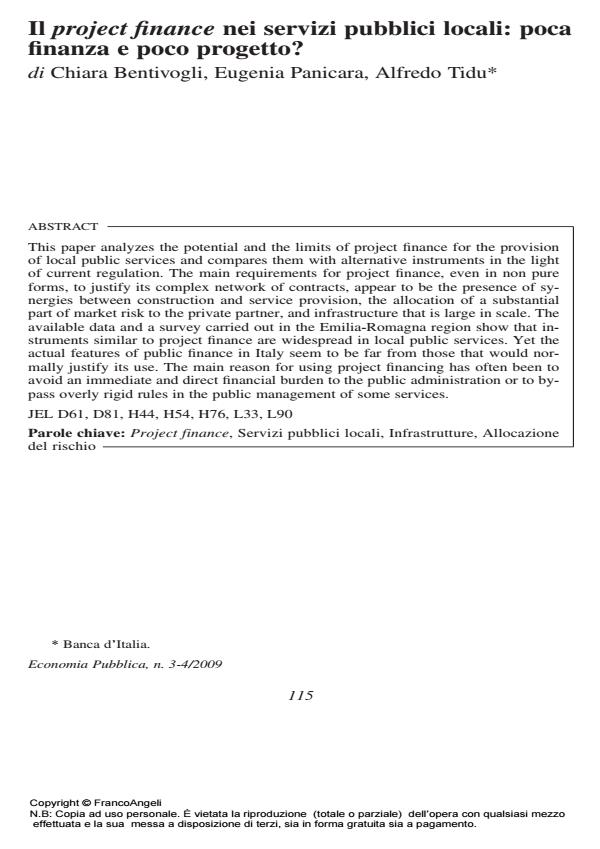Il project finance nei servizi pubblici locali: poca finanza e poco progetto?
Journal title ECONOMIA PUBBLICA
Author/s Chiara Bentivogli, Eugenio Panicara, Alfredo Tidu
Publishing Year 2010 Issue 2009/3-4
Language Italian Pages 38 P. 115-152 File size 2104 KB
DOI 10.3280/EP2009-003005
DOI is like a bar code for intellectual property: to have more infomation
click here
Below, you can see the article first page
If you want to buy this article in PDF format, you can do it, following the instructions to buy download credits

FrancoAngeli is member of Publishers International Linking Association, Inc (PILA), a not-for-profit association which run the CrossRef service enabling links to and from online scholarly content.
This paper analyzes the potential and the limits of project finance for the provision of local public services and compares them with alternative instruments in the light of current regulation. The main requirements for project finance, even in non pure forms, to justify its complex network of contracts, appear to be the presence of synergies between construction and service provision, the allocation of a substantial part of market risk to the private partner, and infrastructure that is large in scale. The available data and a survey carried out in the Emilia-Romagna region show that instruments similar to project finance are widespread in local public services. Yet the actual features of public finance in Italy seem to be far from those that would normally justify its use. The main reason for using project financing has often been to avoid an immediate and direct financial burden to the public administration or to bypass overly rigid rules in the public management of some services.
Keywords: Project finance, Servizi pubblici locali, Infrastrutture, Allocazione del rischio
Jel codes: D61, D81, H44, H54, H76, L33, L90
Chiara Bentivogli, Eugenio Panicara, Alfredo Tidu, Il project finance nei servizi pubblici locali: poca finanza e poco progetto? in "ECONOMIA PUBBLICA " 3-4/2009, pp 115-152, DOI: 10.3280/EP2009-003005